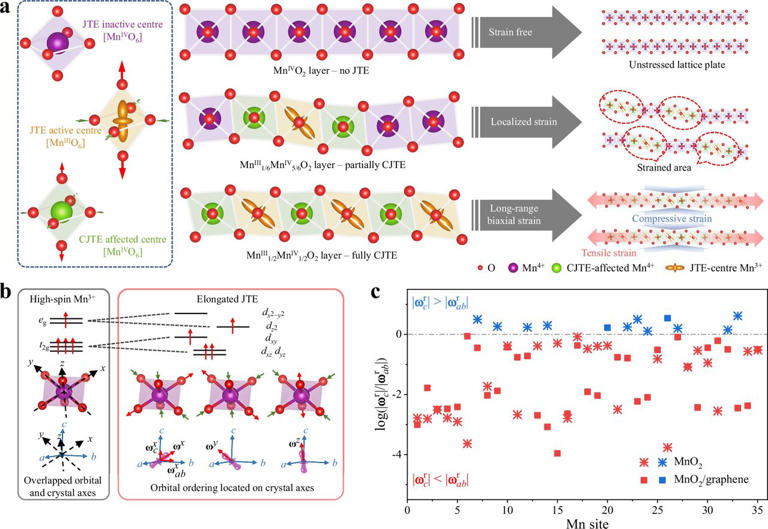Researchers report zinc-ion battery life breakthrough
Australian researchers are reporting a breakthrough with zinc-ion battery technology, developing a new method to significantly boost the structural stability of the cathode material that enables the battery to operate reliably for more than 5,000 charge-discharge cycles.
June 24, 2025 David Carroll

Theoretical prediction of cooperative Jahn-Teller effect-induced long-range biaxial strains.
Image: University of Manchester
Share
    
Researchers at the University of Technology Sydney (UTS), working with scientists from The University of Manchester in the United Kingdom, have developed a new way to improve the lifespan of zinc-ion batteries that offer an alternative to lithium-ion technology for grid-scale storage.
The breakthrough centres on the cooperative Jahn-Teller effect, a phenomena that induces asymmetry in individual ions and solid-state lattices and are commonly observed in structures containing specific transition metals, such as copper and manganese.
The team said it has designed a two-dimensional (2D) manganese-oxide/graphene “superlattice” that triggers a unique lattice-wide strain mechanism. That strain helps the cathode resist breakdown during repeated cycling.
The researchers said the approach boosts the structural stability of the battery’s cathode material, enabling more than 5,000 cycles with 165?mAh?g-1 capacity retention at 5?C (1?C?=?308?mA?g-1) in aqueous zinc-ion batteries. The team said the result is about 50% longer than current zinc-ion batteries.

“Our approach offers an effective strategy to significantly enhance the lifetime of rechargeable batteries by introducing the cooperative Jahn-Teller effect that overcomes the stress of ion insertion in electrode materials,” they said.
“The result is a low-cost, aqueous zinc-ion battery that performs with greater durability, and without the safety risks linked to lithium-ion cells.”
Professor Guoxiu Wang, lead and corresponding author from UTS, said the research, published in Nature Communications, offers a practical route to scalable, water-based battery energy storage technologies.
“This work demonstrates how 2D material heterostructures can be engineered for scalable applications,” he said.
“Our approach shows that superlattice design is not just a lab-scale novelty, but a viable route to improving real-world devices such as rechargeable batteries. It highlights how 2D material innovation can be translated into practical technologies.”
Zinc-ion batteries are widely viewed as a promising alternative to lithium-ion batteries for stationary storage but until now, their limited lifespan has restricted real-world use.
Co-corresponding author Professor Rahul Nair from The University of Manchester said the team’s study shows how chemical control at the atomic level can overcome performance issues.
“Our research opens a new frontier in strain engineering for 2D materials,” he said. “By inducing the cooperative Jahn-Teller effect, we’ve shown that it’s possible to fine-tune the magnetic, mechanical, and optical properties of materials in ways that were previously not feasible.”
The researchers said they had also demonstrated that the synthesis process works at scale using water-based methods, without toxic solvents or extreme temperatures – a step forward in making zinc-ion batteries more practical for manufacturing
pv-magazine-australia.com |






